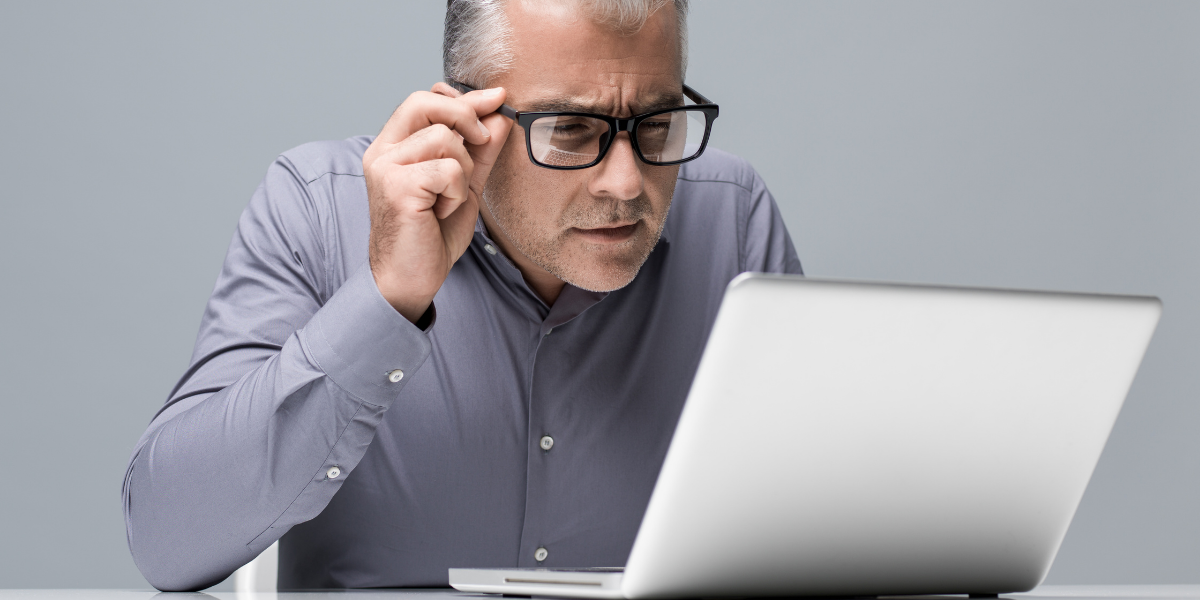Reducing Screen Time & The Dangers of Overexposure to Blue Light
It has become common knowledge that computers, phones, and television screens are bad for our health, partly due to the blue light they emit. Yet, as a society, we collectively have difficulty reducing our time looking at screens. How do you tackle reducing your overall screen time?
Let’s talk about the harmful effects of too much screen time on our health and wellbeing and cover some practical tips for successfully reducing screen time.
Problems of Screen Overuse
Between overexposure to blue light, sitting too much, and other aspects of screen time, electronic devices increase the risk of numerous health problems.
Health Risks From Screen Time:
- Obesity
- Depression and anxiety
- Difficulty sleeping
- Back, neck, and shoulder pain
- Headaches
- Eyestrain
- Stress
- Fatigue
Challenges of Cutting Down Screen Time
Many people find it challenging to reduce screen time, despite knowing the downsides. After all, there are many reasons for using electronics in modern times. Not knowing how to minimize screen time translates into people being in front of screens for a significant amount of time, sometimes totaling 11 hours per day.
Screen Time Purposes:
- Work, as many jobs involve staring at a screen
- Downtime, as many hobbies involve e-readers, video games, watching TV and movies, and other screen activities
- Social activities, as screen time helps us keep in touch with others by engaging with texts, videos, social media, and so on
Steps To Help You Reduce Screen Time
1. Take Breaks
Start simply by taking regular breaks from screen use, and make sure you’re not switching one screen for another during these breaks. Use breaks to move and stretch, standing if you can. Also, give your eyes a break from staring at a screen by at least looking away from screens every half hour and blinking regularly.
Even if you need to keep staring at a screen, you could try to counteract some of the harmful health effects that come from sitting too much by doing it. For example, consider exercising while watching TV or using a standing desk or balance ball chair while working at a computer. Also, while sitting, aim to follow proper ergonomics and improve your posture.
2. Rely on Technology To Help
Use technology to your advantage. For example, you could use an alarm to remind you to take regular breaks, wearables that show you your activity level, and apps or programs that help you track and manage your time better. You could even try functions like app usage limits on your smartphone.
3. Track Screen Time
Just as you might list everything you eat and drink for a week to understand your diet, you can track how much time you spend in front of screens toward the goal of reducing it. You may be surprised at the total amount of time spent in front of screens, especially when you add up screen time for work, downtime, and social purposes.
Try tracking your usage across all screens — televisions, computers, smartphones, etc. — for a day or week to get an idea of your usage. Also, make a note of the purpose of each session.
This information will help you note whether you spend way too much time in front of a screen and find areas you can cut. For example, if you note significant amounts of time on downtime screen activities you don’t feel rewarded by, such as mindless video game apps or social media, you may want to reduce or cut those out. Consider simple fixes like only allowing a specific screen activity for an allotted time, just as you might do for your children.
4. Replace Screen Time
Reducing time in front of a screen doesn’t have to be framed as losing something. Instead, you can find better activities to fill your time that are more rewarding and better for your health. When you find a moment of free time, instead of reaching for your smartphone or TV remote, try something else, such as:
- Going outside
- Visiting a friend in person
- Practicing meditation or mindfulness
- Exercising
- Making time for self-care
- Taking a nap
- Engaging in a hobby or creative project
- Trying another wellness activity
5. Try Light Therapy
Light therapy may sound counterintuitive since one of the problems of screens is the blue light they emit. Nonetheless, it all depends on the type of light you’re exposed to. Red and near-infrared light wavelengths help our cells to produce energy and function optimally.
These types of light can help counteract some of the consequences of our modern lives and using screens too much, such as fatigue, muscle pain, stress, weakened immune systems, insomnia, and mental health concerns.

